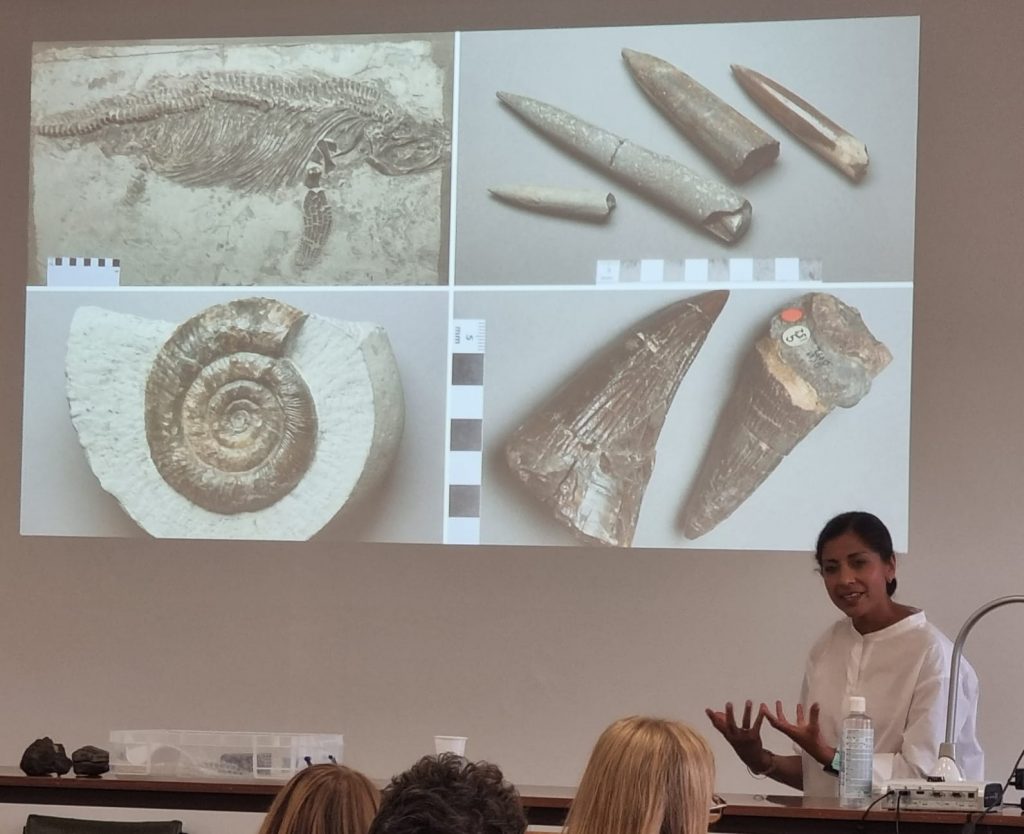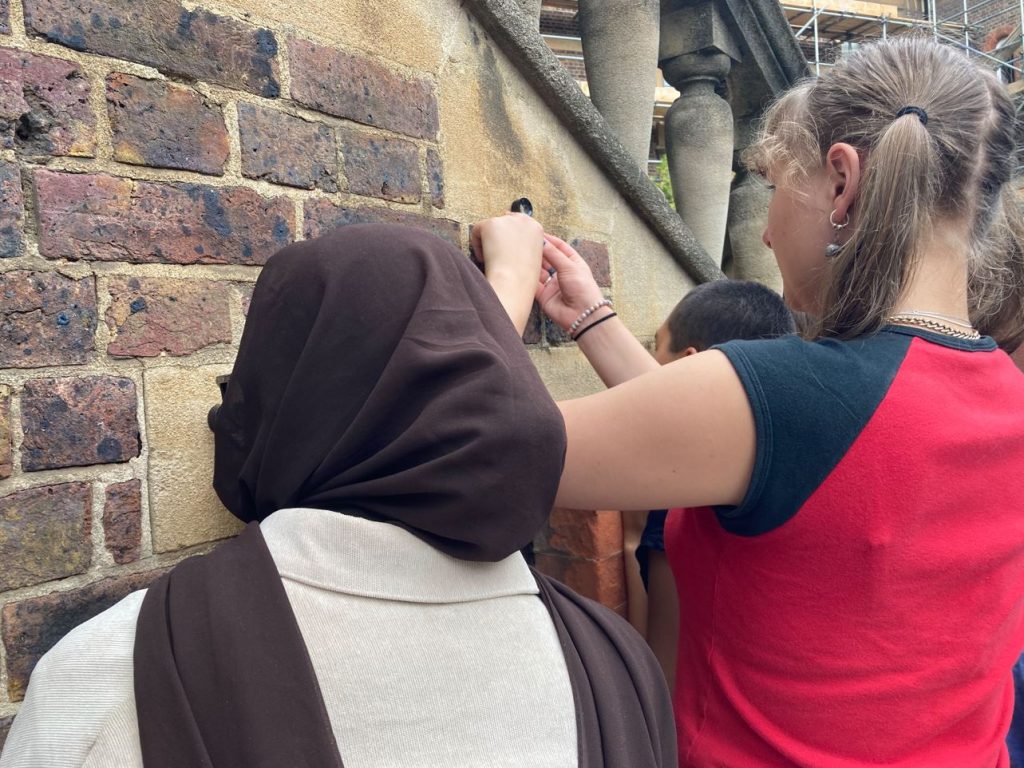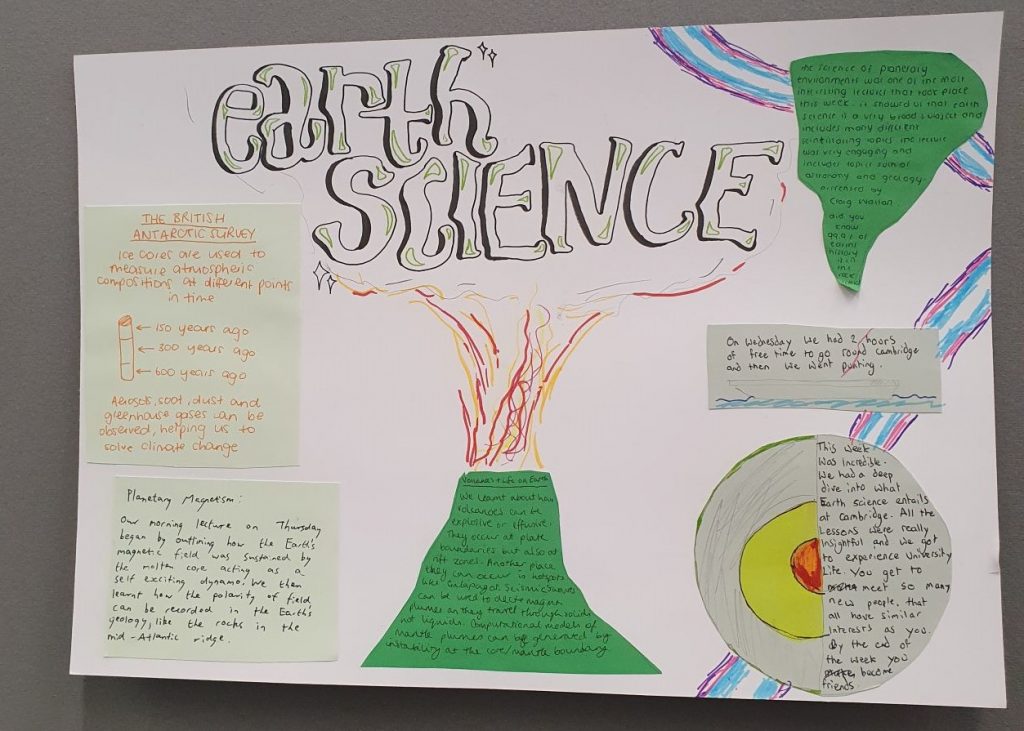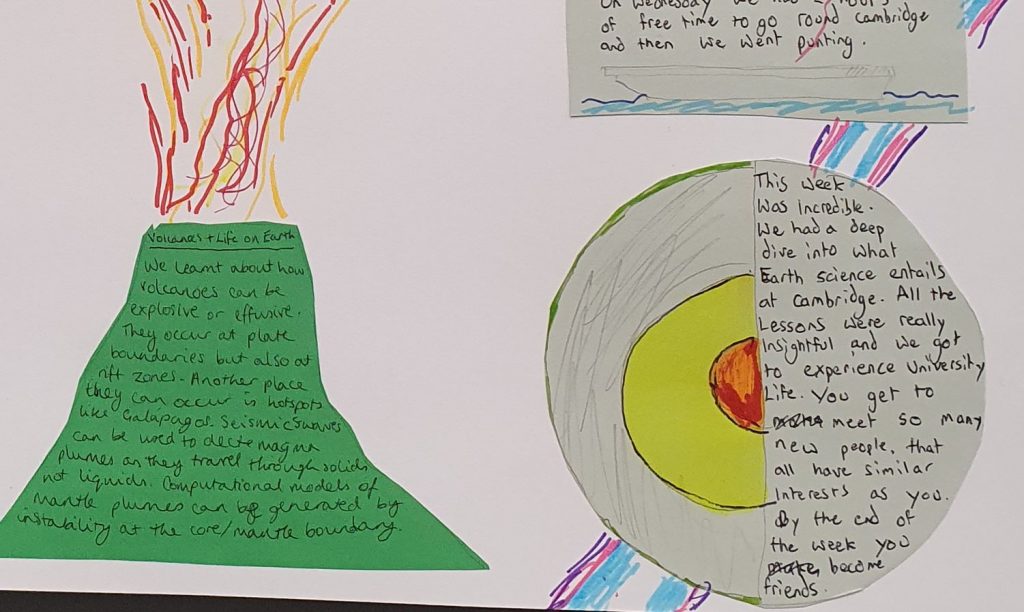This August, the Earth Sciences Department hosted a week-long summer school for college-level students, as part of the Sutton Trust programme.
The Sutton Trust is an educational charity which aims to improve social mobility and address educational disadvantage. The summer school is a widening participation programme open to state-school students and high-achieving students from disadvantaged backgrounds.
While staying at Christ’s college, the students spent the week immersed in Cambridge life; living in college, attending formals, punting and of course, attending lectures and practicals within their chosen subject. Over 630 students studying on 28 subject streams attended the Cambridge summer school, with 24 students joining the Earth Sciences Department.
Over the week, the students attended a schedule of lectures, practicals and field trips designed by Erin Martin-Jones, with the help of three CAMbassadors: myself (fourth year Earth Scientist), Anna Thibieroz (third year Earth Scientist), and Joyce Pereira (second year Geographer). Most of the students had studied physics, biology and chemistry at GCSE and A-Level, so the aim of the summer school was to introduce them to the world of Earth Sciences!
The students began the week with introductory lectures by Alex Copley and Anjana Khatwa (our guest speaker from Wessex Museums) on studying Natural Sciences at Cambridge and the industry of geoscience, with tours of the department.

They explored the seas with Morag Hunter in her sands and microfossils microscope practical (the pink sands of Christina Bay in the Falkland Islands being a class-favourite), and took their first steps into the field with Liz Hide: using their new eyepieces to investigate the buildings stones surrounding the department. Rob Theodore then gave a tour of the Sedgwick Museum, discussing Cambridge’s paleontological collection whilst providing an insightful discussion on the cultural complexity behind the collections and the need for community engagement and diversity in future collections.


Rob Theodore gives a tour of the Sedgwick Museum 
The students try out their new hand lenses on the Museum steps
As the week continued, volcanoes, earthquakes and questions of habitability appeared on the scene, with lectures from Alex Copley and Sally Gibson on Wednesday morning before an afternoon of disaster management and mitigation experienced on a volcanic island, through the board game HAZAGORA. Tours of the Institute of Astronomy and lectures from PhD student Craig Walton and Richard Harrison introduced the students to planetary geology, in particular meteorites and sun spots.

Towards the end of their week in Cambridge the students were whisked away from the tropics of Sally’s Galapagos Islands and HAZAGORA to the freezing temperatures of the British Antarctic Survey over in West Cambridge. After discussing ice cores and their importance for the study of climate change with Thomas Bauska and Amy King, the students observed a real ice core being prepped in the lab and were given souvenir chips of 4,000 year old ice (which quickly melted, of course!). Before finishing their time with BAS they took a short (imaginary) trip to Antarctica, working in groups to design their own ice core drilling missions with the aim of finding the oldest ice on Antarctica using maps of snow accumulation, temperature and altitude.

Holding 4,000-year-old ice 
Students choose the next ice core drill location 
X marks the spot! One group’s proposed drilling location
On the final day, the students were introduced to industry applications of geoscience via the economics of geology by Charlie Beard. Following an activity to investigate the chemical make-up of their phones, they round off the week with a thin-section practical exploring igneous microstructures and minerals under a microscope. I could tell from the students’ reactions that this was certainly a highlight of the week! Before leaving the summer school, the students spent their last afternoon presenting a poster showcase on their favourite moments of the week.



Close up of one showcase poster
From speaking to the students throughout the week it was clear that the summer school had a big impact; everybody got involved in the activities and remained curious and enthusiastic throughout the week, asking questions and throwing themselves into the practicals and engaging in lively debates with the lecturers. Even heading into my four year as an Earth Sciences student I too found myself inspired at many points throughout the week, and was reminded of my younger first-year self when first seeing the vibrant kaleidoscope colours of thin sections under a microscope. Many of the students came up to me at the end of the week to express their thanks to the summer school and their decision that Earth Sciences was the right subject for them!
So, a huge thanks from Anna, Joyce and myself to Erin and all the staff involved in the provision of lectures, practicals, tours, games, and other activities throughout the week making the summer school possible!


